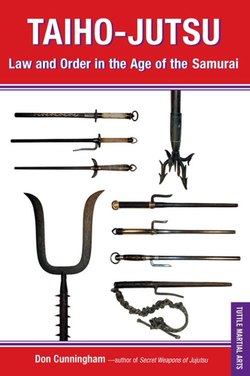Читать книгу Taiho-Jutsu - Don Cunningham - Страница 7
На сайте Литреса книга снята с продажи.
ОглавлениеContents
Preface
CHAPTER 1 The shgun’s city rises from the marshes
Edo’s new residents
Community centers of Edo
Edo no hana (flowers of Edo)
Feudal life on the road
CHAPTER 2 Crime and punishment in Edo
Defining the social classes
Disarming the commoners
Samurai status
Kirisutegomen (killing and going away)
Fukushu (blood feud) and ada-uchi (legal vendetta)
Kabukimono (street hooligans)
Kykaku (street knights)
Criminal organizations
The Tkaid’s Number One Boss
Edo-period justice
Penalties and punishments
CHAPTER 3 Civil authority and policing
The highest ranks
The shgun’s spies: -metsuke and metsuke
Machi-bugy-sh: the town magistrate’s office
Yoriki
Dshin
Criminal investigations
Hitsuke tzoku aratame-kata
Komono
Goykiki
Okappiki
Yomawari
Guard houses and police stations
Patrolling the countryside
Feudal police in popular entertainment
CHAPTER 4 Arrests and arresting implements
Kusurigama
Manriki-kusari
Jutte
Parts of the jutte
Symbols of official authority
Tassel and cord colors
Terms for jutte
Origins of the jutte
Hachiwari
Sai
Chinese influences
Hana-neji
Jittetri-ryu
Jutte after the feudal era
Hibuki
Tessen
Yawara-b
Metsubushi
Hojo-jutsu (restraining arts)
Torinawa (arresting ropes)
CHAPTER 5 Long arms of the law
Yori-b (wooden staff)
J (short staff)
Hanb (walking stick)
Torimono sandgu (three tools of arresting)
Sodegarami (sleeve entangler)
Sasumata (spear fork)
Tsukub (push pole)
Modern police pole-arms
CHAPTER 6 Arts and practice of taiho-jutsu
Wearing a jutte
Gripping the jutte
Kamae (stance)
CHAPTER 7 Defensive techniques
Parrying techniques
CHAPTER 8 Offensive techniques
Striking techniques
Throwing techniques
CHAPTER 9 Arrest and restraining techniques
Control techniques
Disarming techniques
Strangulation techniques
Endnotes
Terms
Bibliography
Index
About Author
